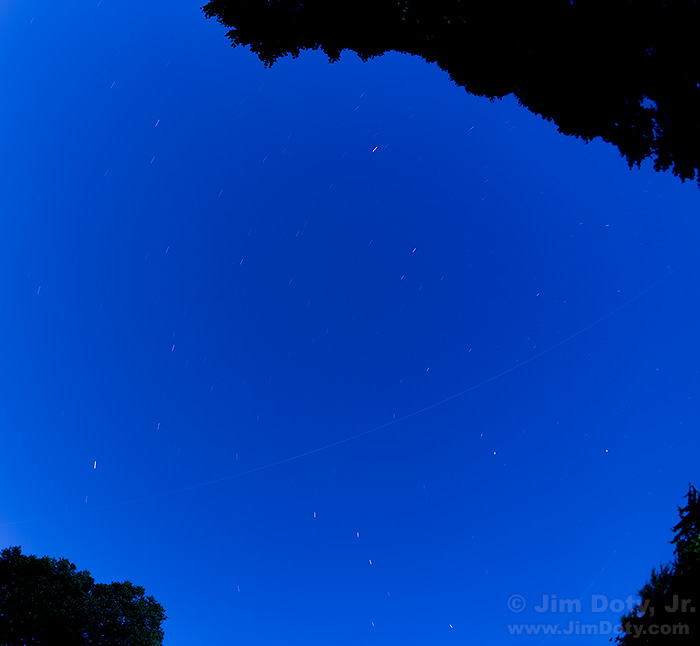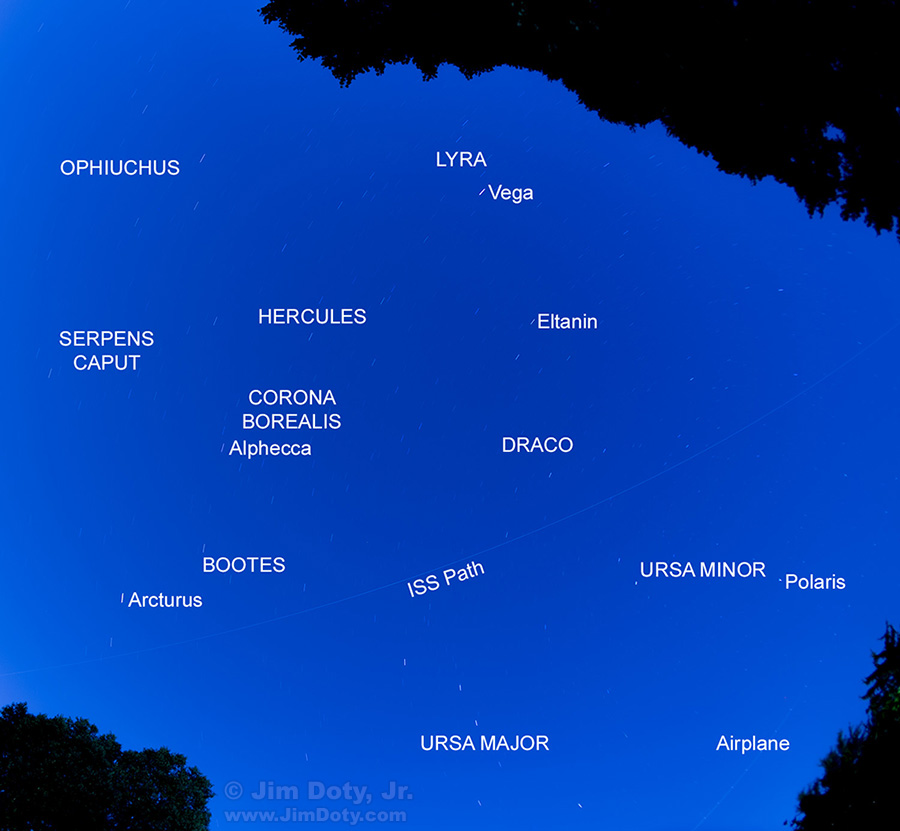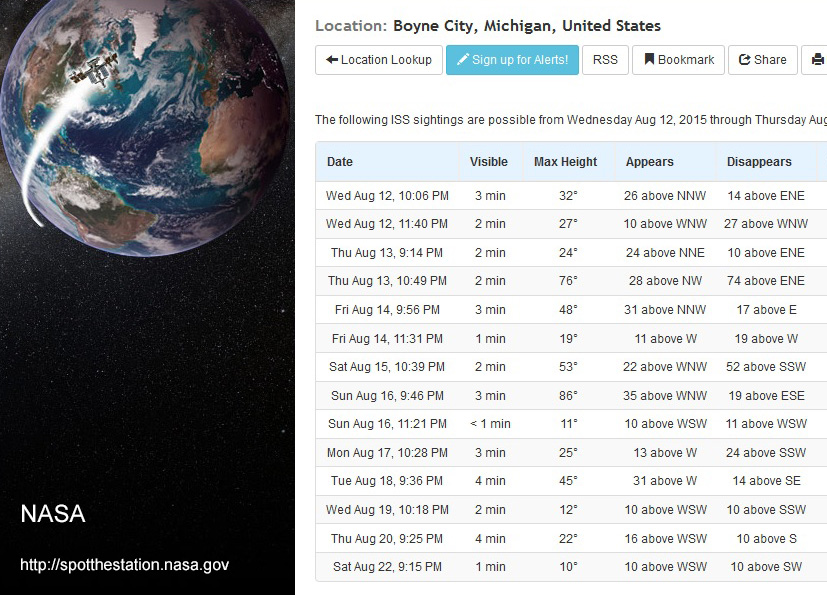
Light Path of the International Space Station. August 1, 2015. 10:05 – 10:09 pm EDT. Click to see a larger version.
The International Space Station (ISS) passes over Columbus Ohio. It isn’t that hard to find and it is relatively easy to photograph. In this photo the light path curves below the center of the frame from lower left to upper right (click to see a larger image). There are also airplane lights in the lower right corner of the frame. The stars are slightly streaked due to the motion of the earth during the long photograph.

Light path of the International Space Station with labels for the Stars and CONSTELLATIONS. Click to see a larger version.
The ISS doesn’t follow the same path on each orbit (relative to the surface of the earth) so it isn’t always visible, and even when it passes by fairly high in the sky it can’t be seen when it is in Earth’s shadow. When it is brightly lit it is easy to see.
This 247 second photo was taken from Columbus Ohio so sky fog was a major issue. I opened the RAW file with Adobe Camera Raw and used the Temperature and Tint sliders to remove the reddish-orange glare of the city lights.
For good sightings (when the ISS is relatively high in the sky) the ISS takes several minutes to cross the sky so long exposures (3-5 minutes) are necessary to catch most of the light path. A tripod is essential. Set your camera to ISO 100, and focus your lens on infinity. A wide angle lens is preferred to take in a lot of the sky. Put your camera on B (for bulb). Open the shutter when you spot the ISS and close it when it disappears.
The more you do this the better you will get at figuring out where the ISS will be, based on NASA’s descriptions, and the better you will get at aiming your lens to get a good photo. You can always do a quick re-aim before opening the shutter if you are a bit off in your initial guess.
Dark skies are best (so Columbus Ohio and other big cities are not your best option). Why did I shoot from Columbus? I wanted to see if it was possible to shoot the ISS from a big city – kind of a worst case scenario.
You can go to NASA’s site and look up when the ISS will pass over your location and you can sign up for email alerts (link below). The timing of good sightings is quite irregular. You might be able to see the ISS a couple of times in just a few days, and then wait quite a few days for the next good sighting.
This is what a NASA Spot the Station Report looks like. I picked Boyne City, Michigan because I will be doing a photography workshop there this weekend.
Photo Data: Canon 5D Mark III. Canon EF 15mm lens. 247 seconds, f/4, ISO 100.
Link

